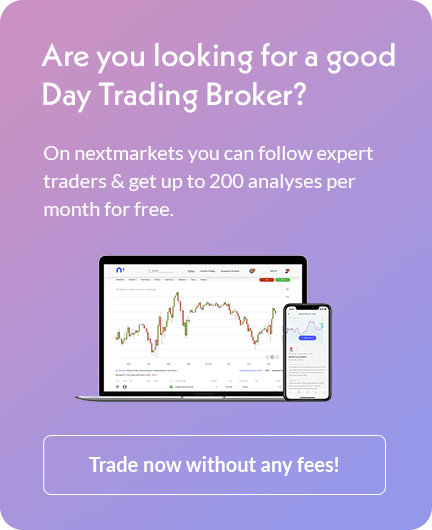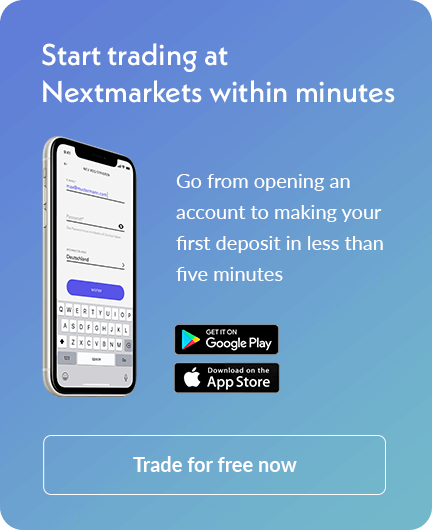Day Trading - Best day trading platform 2023
There’s no doubt about it that day trading is a lifestyle, not a hobby or a part-time money spinning enterprise. It’s not a get rich quick option; it takes a great deal of hard work and dedication to succeed.
The basis of day trading is to execute a high volume of trades within a trading day and to profit from price movements. Leverage is often used to enhance profitability but this also increases risk exposure and amplifies losses. Day trading is described as an ‘active’ form of trading, along with a few other style variations.

Different styles of active trading
The most popular active trading styles include day trading, scalping, swing trading and an advanced version of position trading. Choosing the right style of trading and one that matches your temperament is crucial for long-term success.
Day trading, as the title suggests, involves making trades that are open and closed within market hours, as there is no room for the costs involved in keeping positions open overnight. Day trading involves using technical analysis and a variety of charting systems to open and close multiple positions within the prescribed timescale.
Scalping is sometimes described as a day trading strategy rather than a separate style. It involves making multiple trades daily, sometimes numbering hundreds, with each position being held for a very short period, sometimes just a few seconds. The potential profit per trade is small and scalpers almost always employ specialist software to ensure both quantity and continuity.
Swing trading is a much more laid back and analytical way of trading. Swing traders rely largely on technical analysis and charts to profit from market changes. Although some positions may be opened and closed within a single day, the time frame varies considerably and can be several weeks in some cases.
Position trading in the active trading context is something of a hybridised variant used by advanced traders with a particular skill set. It involves using longer term charts than the average day trader would ordinarily use, together with fundamental as well as technical analysis methods to determine the current trend of the market direction.
What defines a day trader?
Basically, it all comes down to numbers, more specifically, the number of trades made in a fixed period of time. For example, the generally accepted New York Stock Exchange (NYSE) classification of a day trader states that a minimum of four trades must be made consistently over the five-day period when the markets are open and day trading stocks must comprise the largest percentage of all trading activity in that same period.
We would like to start by saying that we don’t recommend scalping when you first start, there are much tamer forms of day trading for beginners . That’s not to say there is anything to stop you exploring all of the possibilities either. Just be aware that regardless of whether you are day trading shares, or day trading cryptocurrency, there is a lot to learn and a lot of potential pitfalls to be aware of before you dive in.
There is certainly no need to attempt to comply with the professional guidelines we detailed above; it is much better to take your time and learn as much as you can first. We also highly recommend that you try out your skills on a demo day trading platform initially, before you start risking your own capital.
Terminology you need to know
Whether you hope to engage in CFD trading, crypto trading or any other type of trading for that matter, there is a lot of jargon you need to get your head around before you can truly understand the trading markets.
In fact, there is probably enough trading-related terminology to fill a small book, but some of it is really fundamental and it is best to have a basic understanding without having to think about what something means at a critical moment.
Derivatives
Real stock trading involves purchasing shares in a business, in the hope that your investment will increase in value. You gain ownership of them and an entitlement to dividend payments and other benefits.
Stock CFDs are one example of a derivative product and work in the same way whether you are day trading shares or day trading crypto. A ‘Contract for Difference’ is also concerned with your prediction of share prices, but you do not own the underlying asset, just the contract, which effectively you can sell back whenever you choose.
Bull and Bear
You will find bulls and bears appearing in almost any trading-related material that you read, so we just wanted to clarify what they metaphorically represent. A bull represents a market that is on an upward trend and where the economy is sound. Conversely, a bear market indicates one where assets are declining in value and a receding economy.
If you struggle to remember which is which, it might help you to visualise a bull tossing something upwards on its horns and a bear striking something down with its paw. Find out how swing trading will provide you with a great way in which to capitalise on online trading markets.
Long and Short
When traders are described as ‘going long’ or taking a ‘long position’ it refers to the purchase of a financial asset. In this position you are therefore expecting the value of the asset to rise, which would give you a profit.
Alternatively ‘going short’ or ‘selling short’ means you are speculating that prices are falling and there is a profit to be made by ‘borrowing’ assets to sell at a higher price, in the hope of buying them back at a lower price; which is a risky stance to take.
Bid and Ask
Although this really is very simple, many beginners struggle to remember how this works, but for day trading Forex it’s vital to get it the right way around. In basic terms, the Bid price is the current price of an available asset, whereas the Ask price is the least a seller is willing to accept for an asset. The difference between the bid price and the ask price is known as the spread.
Market Data
This term is usually used in reference to day trading shares, or stock derivatives. You will usually have free access to Level 1 market data through your brokerage platform, which includes bid price and size, ask price and size and last price and size. This represents the minimum information you need to open a trading position.
Most day traders opt for Level 2 market data, which usually comes at a subscription cost, but contains a depth of information that is vital to any day trading strategy. Level 2 data provides access to the Nasdaq order book, which shows the activities of market makers and other participants including bid/ask prices and sizes.
Orders
There are a lot of variations on a theme, but the main ones you need to understand and make use of are stop-loss and take-profit. As their names suggest, the first can prevent you from suffering unexpectedly high losses and the second is intended to maximise your profit margins.
Leverage and Margin
Although these two terms are interconnected and often used interchangeably, there is a subtle difference. Margin being the minimum amount you need to deposit up-front to open a trading position whereas leverage defines the maximum multiples of that amount you are permitted to ‘borrow’ to trade with.
Margin Call
If you are issued a margin call then it means something has not gone according to plan and your trading account has gone below the minimum balance required by your broker. If this happens, it means that you owe your broker money and you must either add sufficient funds to your account or liquidate investments to cover the amount.
Analysis and Charts
There are two main types of analysis, fundamental and technical. Fundamental analysis is mostly used by stock traders as it involves an in-depth analysis of a business in terms of its financial stability, performance and position relative to its direct competitors. Technical analysis is much more concerned with prices, both actual and comparative. Available data is provided in the form of various types of charts.
The ability to read charts accurately is an essential skill that every day trader needs to have and there are three types of charts commonly used by traders, line, bar and candlestick.
Line charts are the most straightforward to read, but do not contain much information, just the opening and closing prices. However, if you are a beginner, they are a good place to start the learning process.
Bar charts are much more detailed and show vital information pertinent to a specific asset over a selected period of time. Each bar represents a snapshot of data which includes the opening and closing prices, as well as the highest and lowest prices for that period.
Candlestick charts show the same four pieces of data as bar charts, but go a stage further by linking to neighbouring prices. They are certainly more visual by virtue of the ‘body’ of each candlestick and are the tool of choice for day traders and a feature of the best day trading platforms.
However, the really interesting and useful part about candlestick charts is identifying the patterns they create, which are representative of market sentiment. There are around 40 recognised patterns, with some very intriguing names. Using a candlestick chart is something of an essential, but they are complex and it will take you a bit of time to get the hang of it.
What else do you need to think about?
You must decide in advance how much you want to risk on each trade, it is no good staking too much in the heat of the moment especially if you are using leverage as well. As a rough guide, 1% – 2% of your total portfolio balance is plenty and for larger portfolios, this could be reduced to 0.5%.
Time
Don’t underestimate the amount of time you will need to spend working as a day trader; it is not an occupation with convenient office hours. As well as market trading hours, you will also need to spend time outside of that researching the market and potentially revising your trading plan accordingly.
Record-keeping
If you are trading full-time, you will almost certainly be liable for income tax, so it is vital that you diligently record each trade, together with profits and losses. Even if you do not earn sufficient to be liable for tax, these records will also provide you with an overview of your successes and failures, which you can use to improve your trading plan.
Knowledge
As the old saying goes, knowledge is power and no less so than in trading. The more you take the time to learn new trading techniques and to observe the markets, the more successful you are likely to be.
Use orders
Make sure that you understand and implement orders like stop-loss and take-profit. Things can and frequently do change rapidly in the trading markets and using the right orders can be your saving grace or net you a great profit.
Stay calm and stick to your plan
There is no room in the day trading world for emotions, every decision and every trade you make must be logical and in keeping with both available capital and your risk tolerance.
Begin your day trading journey with the best
Knowing how to begin your day trading journey is one thing, but knowing where to begin is equally important. Here at nextmarkets, we offer our traders with proper guidance and tools required to proficiently day trade. Not to mention, our platform aims to provide educational tools, guidance, and continuous support throughout your day-trading journey.
A few of the many benefits of day trading with us at nextmarkets:
- Our platform is easily accessible through your phone, tablet, or laptop. It’s also designed in a user-friendly manner so you can make instant trades from anywhere conveniently.
- Day trading demands you to remain connected with your trades throughout the day so you don’t miss out on valuable opportunities. Gladly, our trading platform enables users to effortlessly remain in touch with their trades throughout the day with the help of advanced tools.
- We believe the secret to reducing risk in day trading and improving your chances of making successful trades is to invest in continuous learning. The more you know, the better you perform. Thankfully, we make learning easy and accessible to our traders in the form of tips, guides, and available mentorship or guidance.
Combining the right set of knowledge and an innovative and user-friendly trading platform can do wonders for you. After all, the impact of a trading platform on one’s investments cannot be undermined.
Our final thoughts
Although there is much to learn before you will feel confident, once you have mastered a few techniques and developed your own trading style, as well as determining what your end goals are, you can use a series of strategies to help you in your quest for profit.
Our advice to you is to start small, learn as you go and make the best use of our extensive guides which will help you to grasp the basic skills you need to start your trading career. It is inevitable that you will find things won’t always go quite according to plan, but use any setbacks as a tool to get things right the next time. Head on over to our day trading strategy to improve your trading outlook.




